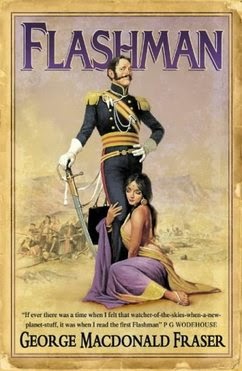 Article on how bailout debts taken out by Governments can last many centuries. To me another take home message was that these debts become small change with time because of inflation.
Article on how bailout debts taken out by Governments can last many centuries. To me another take home message was that these debts become small change with time because of inflation.==============================================
LONDON
— Share prices went through the roof, speculation ran wild and money
poured into ill-fated ventures before the boom turned, inevitably and
catastrophically, to bust.
After that financial crash in 1720, called the South Sea Bubble,
the British government was forced to undertake a bailout that
eventually left several million pounds of debt on its books. Almost
three centuries later, Britons are still paying interest on a small part
of that obligation.
Now,
prompted by record low interest rates, the British government is
planning to pay off some of the debts it racked up over hundreds of
years, dating as far back as the South Sea Bubble.
George Osborne, the chancellor of the Exchequer, said this month that in 2015 Britain
would repay part of the country’s debt from World War I, and that he
wanted to pay off other bonds for debt incurred in the 18th and 19th
centuries.
That
includes borrowing that may have been used to compensate slave owners
when slavery was abolished, to relieve the famine in 19th-century
Ireland and to bail out the infamous South Sea Company, which caused the
bubble in 1720.
Economically,
the move is no different from a homeowner’s decision to refinance a
mortgage at a lower rate. In an era when the government can borrow at
1.5 percent or less, paying out to holders of historic debt anything
from 2.5 to 4 percent per year, as it is now, makes little sense.
But the maneuver is also a reminder of how debts incurred by governments are passed down through generations.
In
many cases, the underlying debt has already been refinanced, sometimes
multiple times, since being incurred. The bonds paying interest on the
debt have been bought and sold and passed down through generations,
still paying interest indefinitely, until the government decides to pay
them off. So old are some of the bonds that closing the books on them
may require an act of Parliament in some cases.
Gary
Shea, head of the school of economics and finance at the University of
St. Andrews, said historic debt is “real,” even if the vast majority of
public borrowing is fairly recent. “The taxpayer is still financing the
interest payments on it,” he said.
One
of the bonds Mr. Osborne plans to pay back next year is a 3.5 percent
war loan issued in 1932 in exchange for earlier bonds. It still has more
than 120,000 holders, including 38,000 who own bonds with a face value
of less than £100, or about $155. In March, those who still own the
bonds will get the original stake back at a cost to the government of
£1.9 billion.
Also
set for repayment are “4 percent consols,” or securities, issued in
1927 by Winston Churchill, then chancellor of the Exchequer, partly to
refinance National War Bonds originating from World War I. Now worth
£218 million, they will be repaid in February.
Reissuing
bonds was a big administrative endeavor in earlier eras. In 1932, the
conversion of an earlier war loan to one paying lower interest required
so many temporary clerks that 700 lambs were prepared to feed them one
evening, according to a history of Britain’s debt by Jeremy Wormell.
Now, in the computer age, the task is relatively straightforward,
officials say.
Within
a total debt of around £1.4 trillion, the historic liability accounts
for a small portion — about £2.5 billion, or less than two-tenths of 1
percent of the total outstanding.
But
over the centuries, Britain’s borrowing has at times been huge and has
come in different forms, sometimes including loans from other
governments.
It was not until 2006, for example, that Britain fully repaid its lend-lease debts to the United States from World War II.
Some
international loans from the aftermath of World War I were never fully
paid and were effectively put aside in 1934, though Britain also failed
to recoup debts it was owed by other nations.
The
recent eurozone debt crisis is creating a similar legacy in countries
that took bailout loans. Ireland is not scheduled to make its final
repayment to international creditors until 2042. Greece is scheduled to
do the same in 2054.
Britain’s
current stock of open-ended historical debts does not include
international loans but is made up of a variety of bonds known as gilts,
a name that comes from the original British government certificates
that had gilded edges.
Of
course, much of the original debt has been eroded by inflation.
According to research for the British Parliament, prices rose by around
118 times from 1750 to 1998.
The
debt originating in part from the South Sea Bubble, the oldest still on
the books, was consolidated into bonds issued in 1853, and those who
now own them receive an annual payout of 2.5 percent.
According
to the Bank of England, that original debt of around £4 million was
probably incurred around 1722, though other sources suggested it might
date from a few years later.
Experts
say that some of the government bonds issued in the years after 1720
were created to replace earlier ones that had paid higher interest — a
principle that Mr. Osborne is following three centuries later.
“We
are now in a period,” said Mr. Shea of the University of St. Andrews,
“in which interest rates are even lower than they were in the 18th
century.”


























